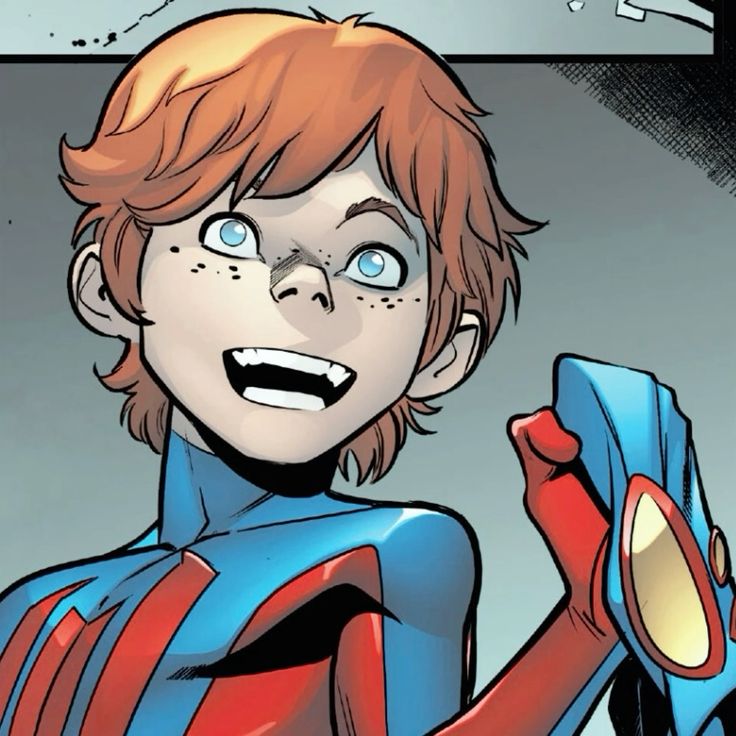By Andrew J. Hewitt, APRN-BC
Abstract
Bailey Briggs, known as Spider-Boy, is a young superhero whose existence was literally erased from reality—bringing unique psychological complexities surrounding identity, trauma, reality, and belonging. This article explores his mental health through a DSM-5 lens, addressing themes such as identity disruption, grief, existential insecurity, and resilience. His narrative offers clinicians new ways to engage youth experiencing alienation or trauma, using metaphorical frameworks.
Introduction
Marvel introduced Spider-Boy (Bailey Briggs) in 2023 in Spider-Man Vol. 4 #7 (April 2023), a child protagonist imbued with spider-like abilities through forced genetic experimentation (Dan Slott & Mark Bagley) WikipediaMarvel. His origin includes grotesque body horror—organs replaced with spider parts by Madame Monstrosity—making him a human-spider hybrid with fangs, spider eyes, and psychic spider-sense PopverseSuperhero Databasespiderman.fandom.com. Rescued by Spider-Man, he trains under Daredevil, becomes Spider-Man’s sidekick, and eventually is erased from history. When restored, no one including his mother remembers him MarvelWikipediaCBRComic Vine.
This paper interprets Bailey’s psychological landscape via DSM-5 constructs such as identity disturbance, bereavement, adjustment disorders, and trauma-related disorders. Though fictional, his experience illuminates real struggles of youth grappling with trauma, disconnection, and validation.
Identity Disruption & Existential Insecurity
Bailey’s erasure followed by a return to a world unfamiliar with him characterizes profound identity disruption. He exists, yet his existence is unacknowledged, imparting existential insecurity and identity confusion—core themes in DSM-5’s identity disturbance frameworks (APA, 2013).
His role as Spider-Boy becomes a source of self-definition amid alienation. Attempts to prove his existence (e.g., saving Christina Xu) reflect a fight for validation and belonging MarvelCBR+1.
Complicated Grief and Attachment Trauma
Bailey’s loss goes beyond familial connections—it’s an ontological grief: complicated bereavement from being unremembered by family and mentor. He experiences ambiguous loss—where presence is invisible—which aligns with DSM-5 criteria for persistent grief marked by guilt, rejection, and identity disintegration.
Attachment theories underscore this: Bailey’s trust in caregivers—Spider-Man, Christina, Aunt May—shifts unpredictably, raising risk for insecure attachment and chronic anxiety over acceptance.
Adjustment and Trauma-Response
Being genetically altered through body-horror and erased from history represents traumatic stress with both physical and psychological sequelae. Bailey’s subsequent adjustment to a world that doesn’t recognize him mirrors adjustment disorder per DSM-5, with emotional dysregulation and impaired functioning arising from a traumatic life disruption change PopverseWikipedia.
His reckless heroism, impulsivity, and anger when discounted hint at impaired emotion regulation—characteristics common in youth post-trauma.
Anxiety, Hypervigilance & Existential Pressures
Bailey exhibits hypervigilance: his Spider-Sense warns of danger to others, suggesting heightened externalized responsibility. Anxiety surfaces through his compulsion to prove worth, survival instinct, and achieving validation via heroic acts Superhero DatabaseMarvel.
DSM-5 traits of GAD, acute stress reaction, or even subclinical PTSD may apply, though fictional contexts differ. He exhibits internalized anxiety, somatic expression (spider-fangs and eyes), and sensory overload—especially managing his multiple eyes and psychometric abilities.
Resilience, Purpose & Post-Traumatic Growth
Despite trauma, Bailey demonstrates resilience and post-traumatic growth. He finds purpose in helping others—rescuing Christina, teaming with Squirrel Girl, aiding Toy Soldier in choosing heroism, and even persuading his monstrous double Hellifino to choose differently CBR+1Marvel.
These actions reflect meaning-making and adaptive coping strategies, protective factors under DSM-5 resilience models.
Clinical Reflections and Psychoeducation Applications
For APRN-BC clinicians, Spider-Boy’s story offers a metaphorical template to address youth grappling with:
- Identity invisibility or alienation (e.g., adoption, cultural disconnection, neurodivergence)
- Complicated grief (e.g., loss without ritual, rejection trauma)
- Attachment wounds (e.g., inconsistent caregivers, trauma-informed therapy)
- Meaning and agency in trauma (post-traumatic growth, narrative reframing)
Using fictional characters like Bailey in narrative therapy or superhero therapy allows externalizing struggles safely, encouraging clients to project vulnerabilities and strengths onto metaphorical heroes—and envision their own restored presence and self-worth.
Fan Reception & Social Context
Fan discussions reveal emotional resonance: many appreciate his underdog origins and identity struggle:
“…fun personality… premise seemed weak… but once… rolling… fun with character work” Reddit.
Others debate the trope:
“…everybody forgot this character existed” trope… feels overused… Reddit.
These reflect narrative fatigue yet acknowledge the relatability of erasure—connectivity through metaphor.
Conclusion
Spider-Boy’s narrative—erased, forgotten, yet undeterred—is a moving allegory of identity, loss, and resilience. Through DSM-5–informed analysis, we see how his experiences parallel real-world psychological phenomena: identity disruption, grief, anxiety, and recovery. As mental health professionals, using such narratives can foster connection, validation, and growth for youth journeying toward self-recognition.
References
American Psychiatric Association. (2013). Diagnostic and statistical manual of mental disorders (5th ed.).
Marvel. (2023). Spider-Boy (Bailey Briggs) Powers, Enemies, History. Marvel. Marvel
Wikipedia. (2025). Spider-Boy (Bailey Bartholomew Briggs). Wikipedia. Wikipedia
Popverse. (2024, Feb 21). Marvel reveals that Spider-Boy’s origin is a lot more tragic (AND HORRIFYING) than we originally thought. The Popverse. Popverse
Marvel. (2023, June 26). Spider-Boy Lands His First Ongoing Series. Marvel Comics. Marvel
Weird Science Marvel Comics. (2024, Feb 22). Spider-Boy #4 Review – Weird Science Marvel Comics. Weird Science Marvel Comics
CBR. (2023). Spider-Boy Has Marvel’s Most Unique Rogues Gallery. Comic Book Resources. CBR
Reddit user commentary. (2024, Feb). “I actually don’t hate him… premise seemed weak… but… character work…” r/Marvel. Reddit
Reddit user commentary. (2024). “the ‘everybody forgot this character existed’ trope… feels overused.” r/Spiderman. Reddit

